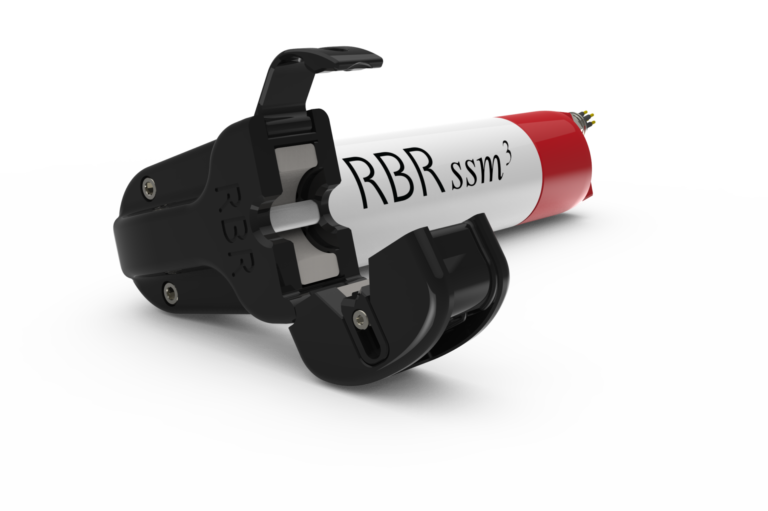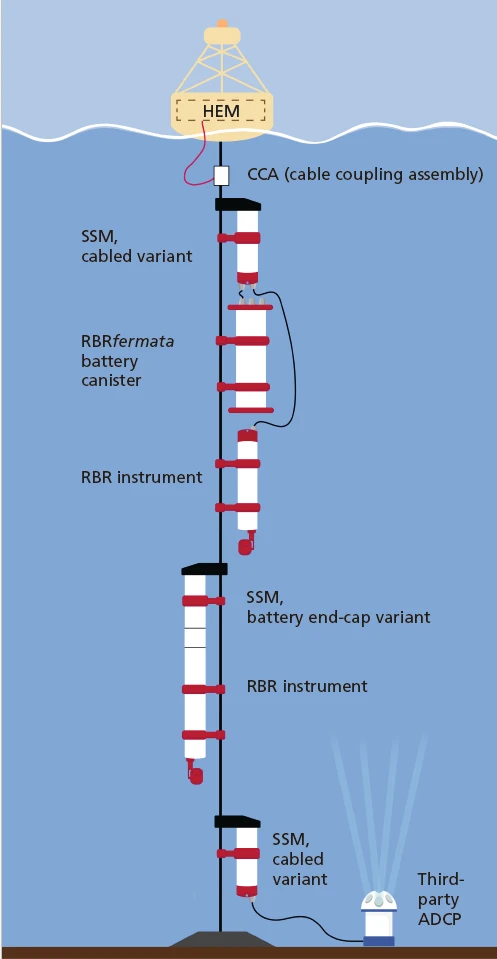Easy system integration
Inductive mooring line modem
Supporting as many instruments as required and operating at the baudrate of 4800 over an insulated mooring line of more than 4km length, the RBR inductive mooring line modem can meet any challenge. It is a simple, strong, fast, and flexible solution to bring your data to the surface.
- Easy system integration
- Low power consumption
- Fast data transmission
- Flexible configuration
- Robust and reliable
- RS-232 output

Features & Configurations
The inductive mooring line modem consists of the head-end modem (HEM) and one or more sub-surface modems (SSM). Each instrument on the mooring line system is connected to an SSM, which communicates inductively with the HEM through the mooring cable.
The main features of the inductive mooring line modem are a fast communication rate along the mooring line, shock protected ferrites, no pre-deployment configuration required, an automated instrument discovery mechanism, and an intelligent addressing mechanism that conserves power. A comprehensive set of system commands is available to query or command the instruments to identify themselves, take a sample, and transmit data. Instruments may be addressed individually, in sub-groups,or all at once.
The SSM is available as an integral option for RBR instruments, attached as the battery end-cap via a coupler. Alternatively, use it as a standalone cabled version for serial connection to an RBR instrument in combination with the RBRfermata battery canister, or to a third-party instrument, such as ADCP.

Specifications
| Baudrate | 4800baud |
|---|---|
| Mooring line | Ø5 − 15mm |
| Serial communication | Up to 115000baud |
|---|---|
| Polling mode | Scheduled or interactive |
| Addressing mode | Individual, group, or all |
| Voltage | 9.5V to 22V |
| Power consumption | Sleep current: 50μA typ, 75μA max @ 12V Active current: 8mA typ, 12mA max @ 12V |
| Temperature range | -30°C to 60°C |
| Clock accuracy | ±60 seconds/year |
| Housing | Weatherproof |
| Dimensions | ~260mm x 125mm x 85mm |
| Serial communication | 4800 to 19200baud |
|---|---|
| Voltage | 8V to 22V (ext), 2V to 8V (bat) |
| Power consumption | Sleep current: 40μA typ, 60μA max @12V (ext) 120μA typ, 180μA max @7V (bat) Active current: |
| Temperature range | -10°C to 50°C |
| Housing | Plastic or Ti |
| Dimensions | ~330mm x Ø63.3mm (plastic) ~310mm x Ø60.3mm (Ti) |
| Depth rating | 750m (plastic) 4000m (Ti) |
